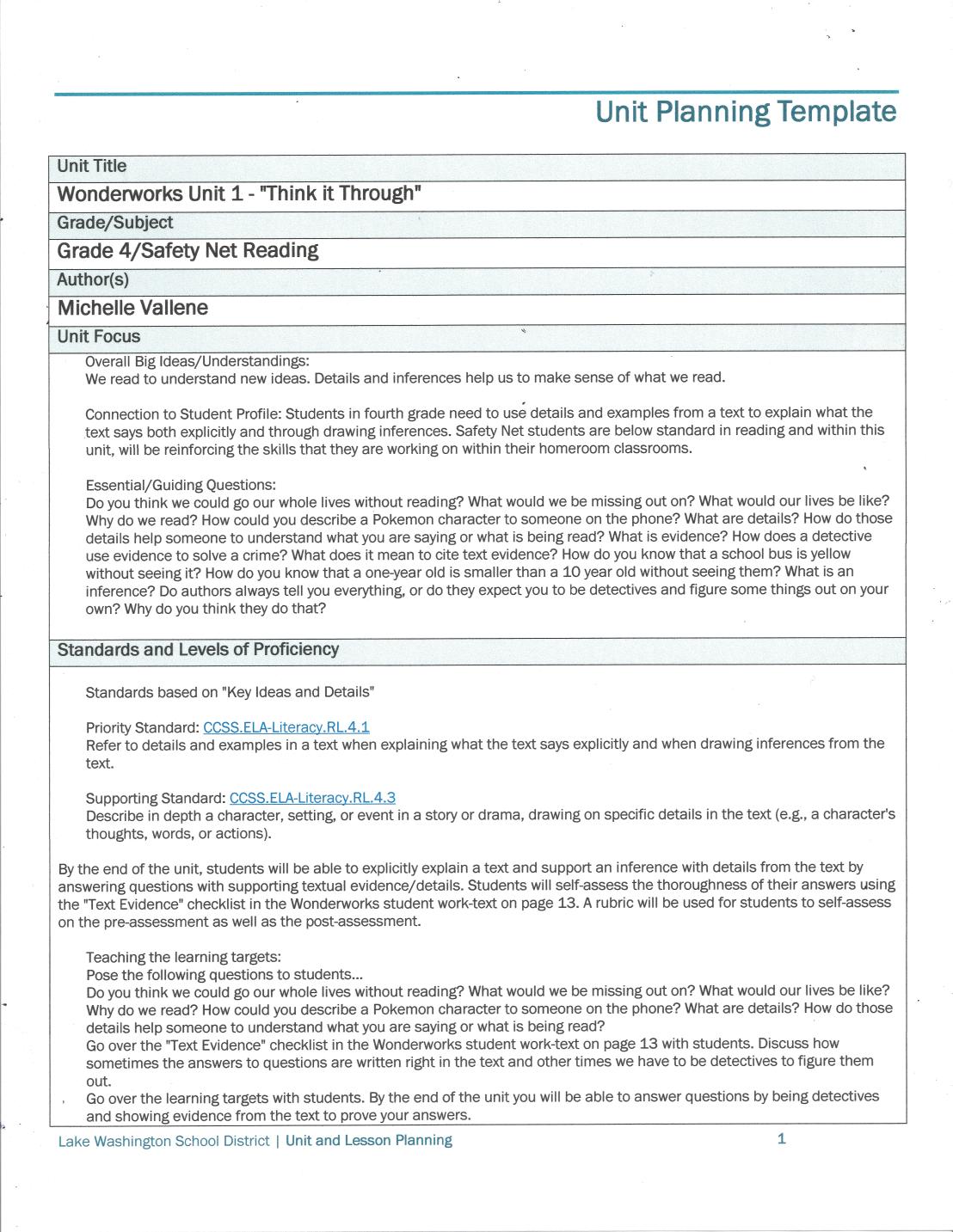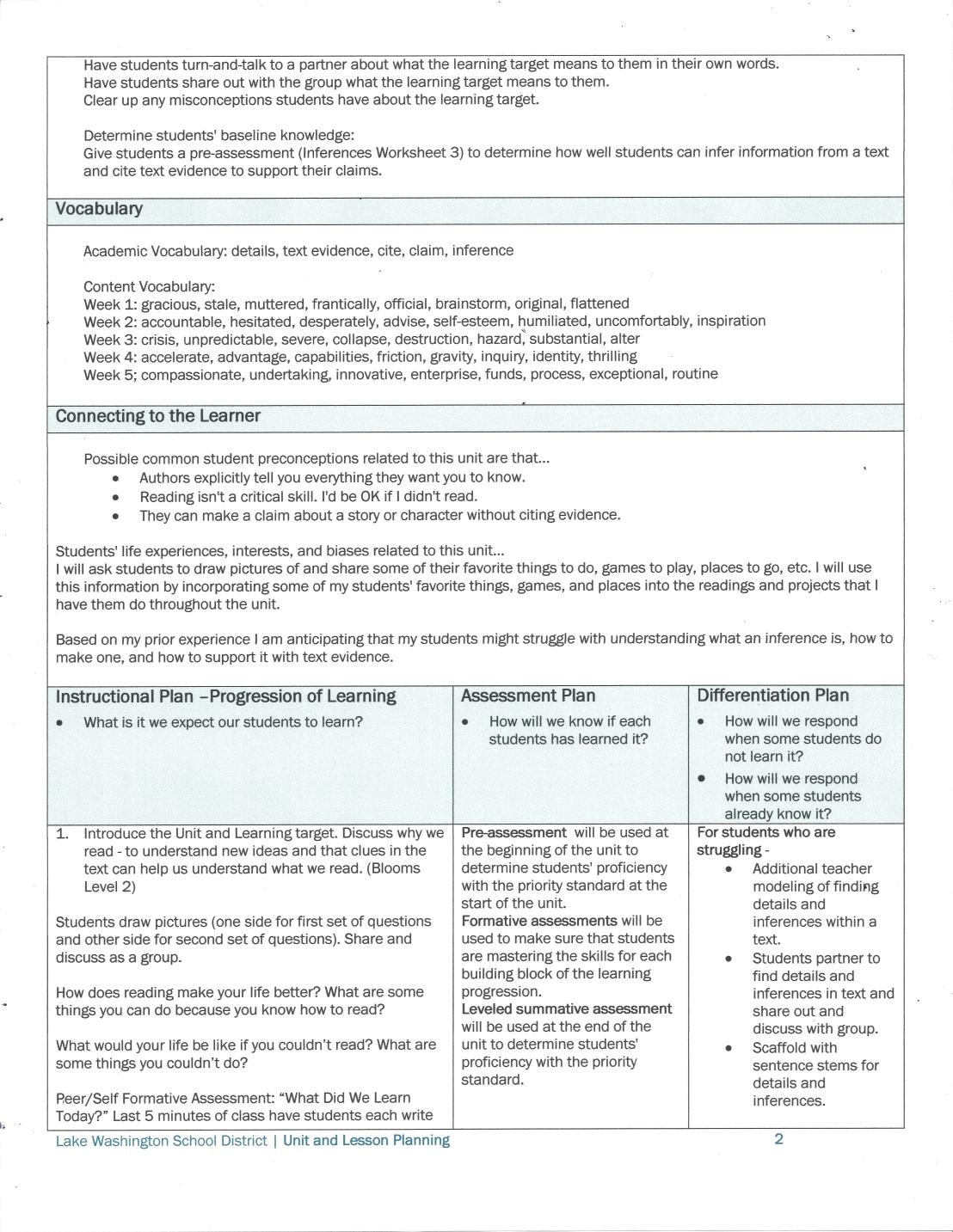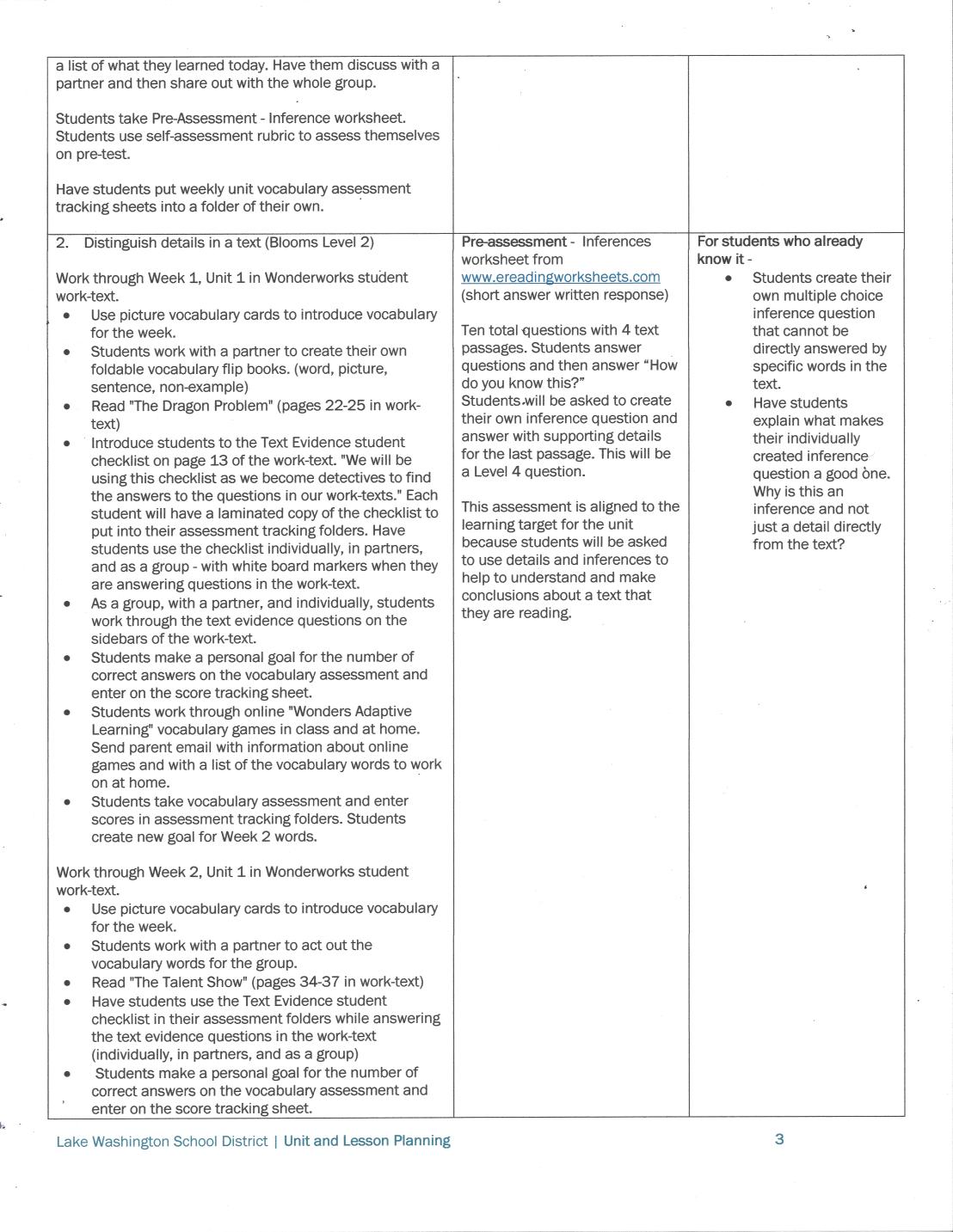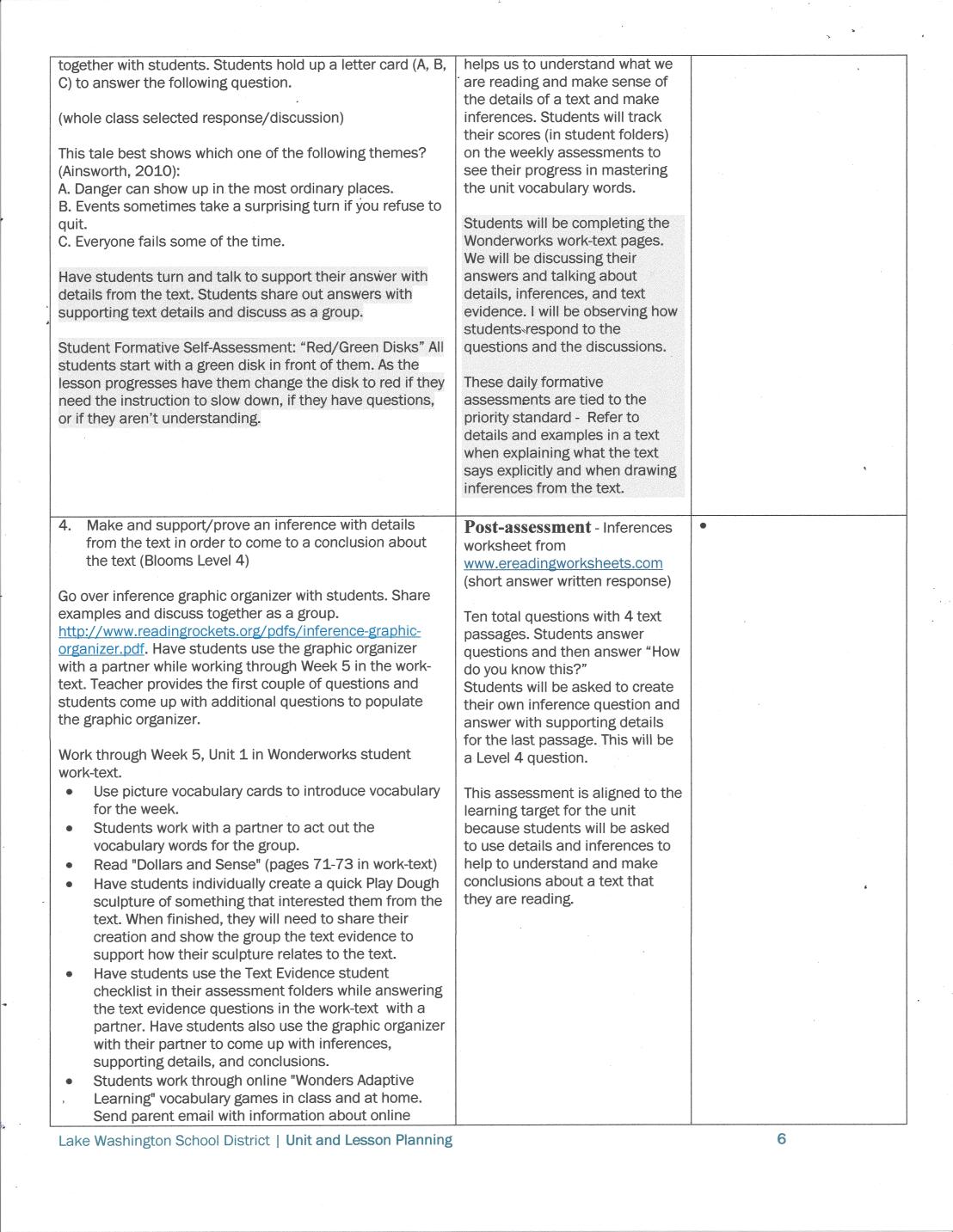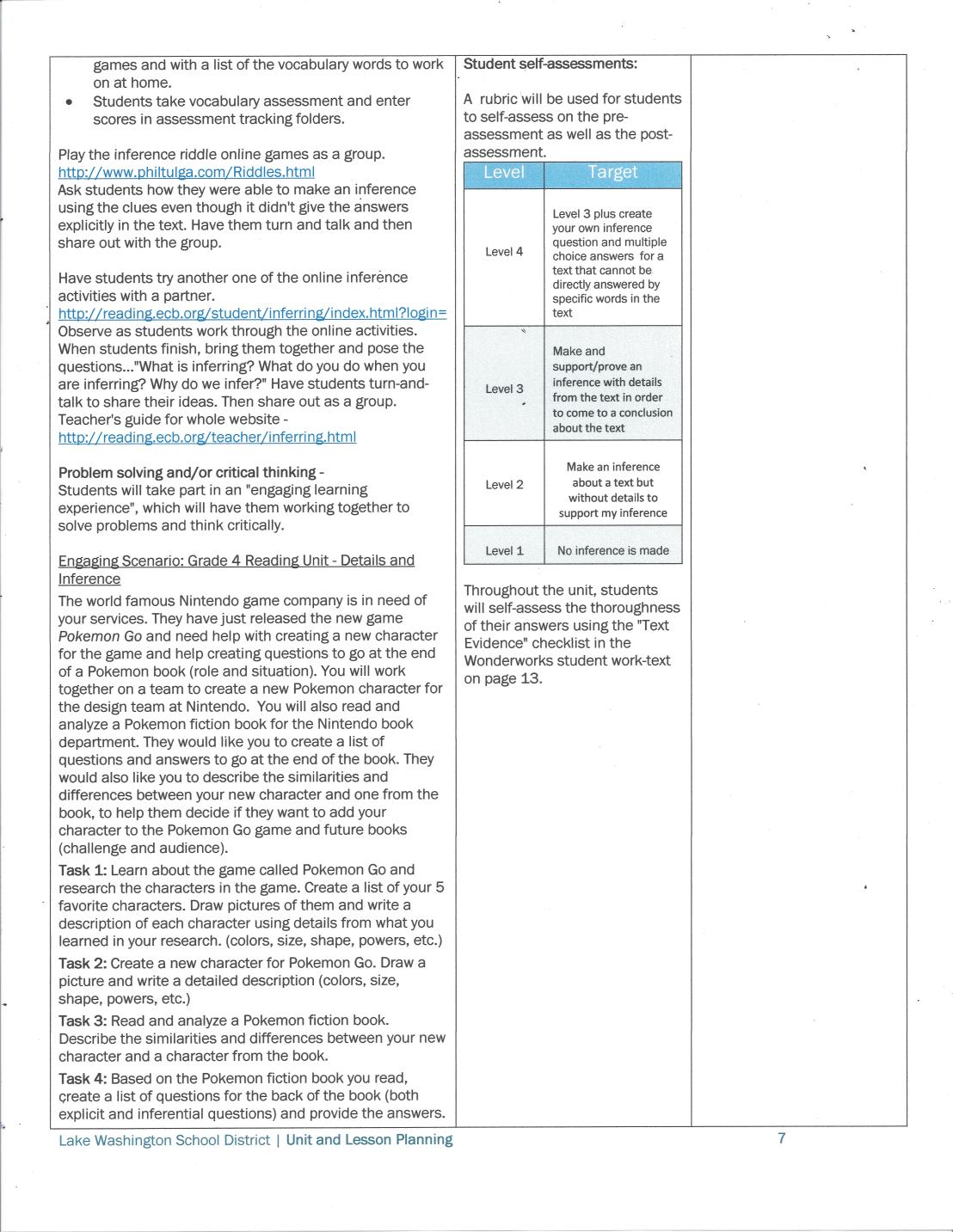
Teacher Leadership Program Standard #11: Utilize formative and summative assessment in a standards-based environment.
According to the course syllabus, the following are the course description, goals, and guiding questions…
Course Description
The aim of this course is to develop attitudes and skills necessary to provide sound classroom assessment experiences for learning that yields accurate, usable information for students, teachers, and parents, while also assisting teachers as they develop the skills and judgment needed to integrate assessment into instruction.

Goals
The primary goals of this course are to 1) to develop a sense of assessment vocabulary and conversation, and 2) to define and implement a strong understanding of sound classroom assessment practice and experiences within an authentic classroom context.

Guiding Questions
Three guiding questions that help us move us move in the direction of the goals stated above are 1) What do I want my students to learn (in terms of standards) 2) Where are my students currently in their progression of learning? And 3) How can I help support their learning?
Assessment for Learning:

Five Key Strategies
- Share learning expectations
- Elicit evidence
- Feedback
- Self-assessment
- Peer-Assessment
Formative Assessments:

At the beginning of the course, I felt that formative assessments were assessments done throughout the lesson or unit to determine student understanding. They could be quick, such as thumbs up/down/or sideways or exit tickets. They could also be observations made by the teacher as students progress through the lesson/unit. They might be a mid-unit assessment to see what students know and what they still need to more clearly understand. I use formative assessments to monitor and adjust my teaching. Throughout the lesson, I have used quick checks and have observed students to check for understanding and misconceptions. As I do these quick formative assessments, I try to clear up any misconceptions that students may have and I also re-teach or move on, based on how well my students seem to be understanding. I stated that I wanted to learn more about different types of formative assessments, how to design them to give the best data in the shortest amount of time, and how to better analyze and use them to adjust my teaching.
Sharing Learning Targets with Students:
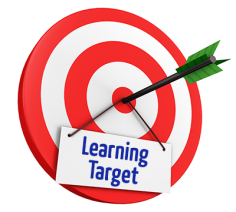
In the past, I have shared learning expectations by going over a rubric and sharing success criteria with my students to show them what we would be learning and the steps we would be taking to reach our learning goals. Other times, I have started with a question such as, “Why do you think it’s important to learn about fractions?” This gets a discussion going and helps students come to understand the real world importance of the learning that will be taking place. They have more buy-in when they have discussed the purpose of the learning. We revisit those reasons throughout the unit as a reminder of why we are doing what we are doing and that our learning target relates to those reasons. I’m was excited to learn a variety of new ways to introduce and teach learning targets to my students through this course. I also wanted to learn ways that I can hook my students into the lesson and help them to understand the learning targets, but not take up too much time since I only have my small groups for about 30 minutes a day.
Eliciting Evidence of Student Learning:
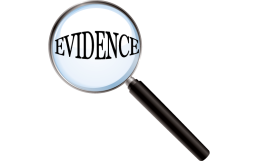
In the past, I have used multiple ways to elicit evidence of student learning. I often use individual white boards and either have students answer questions and hold up their white boards or I observe them as they are doing the work on their boards. Using the game of Jeopardy (teacher created questions based on the unit) is a fun way to engage students in the material and also to assess whether they are understanding it or not. I break the class or group into two teams. Each student has a mini white board and has to solve or answer the question. Then they share their answers with their team and come to a consensus about the correct answer. The other team has to do the same thing in order to check their answer against the opposing team’s answer. http://exchange.smarttech.com/search.html?q=%22jeopardy%22 (Links to an external site.). I also love to use hands-on artistic ways for students to show what they know. I have students draw a picture or make a play dough sculpture to demonstrate what they have learned or read. I then have students share out with the group using their artwork as a prop. Sometimes I will have them act out what we have learned or what they have read. Since I mainly teach small groups of students, we are constantly having group discussions in which I can observe how students respond and I adjust my teaching as necessary based on their responses. I’ve had students answer a question or put down their ideas on sticky notes and post them on a chart. I have used the thumbs up/down/sideways to find out if students feel like they are “getting it”. I really like the idea of the question cards (A, B, C, D) for students to hold up as they answer a question. I have never used this technique, but I’m definitely going to in the future. Through this course, I wanted to learn about additional ways to check for understanding with my students that are quick, informative, and interesting to my students.
Feedback:

I totally agree with Wiliam’s (2011) quote that, “Feedback should cause thinking.” Feedback should cause students to think more closely about the work that they have done and what incremental steps they can take to work toward achieving or surpassing the standards. According to research, feedback in written comments is best delivered without a grade attached. This is due to the fact that once a student sees his/her grade, they are not as likely to carefully read the comments. It also seems more final if a grade is attached. This most often informs the student that no additional work can be done to improve the grade. Therefore, why bother looking at the comments very closely. Feedback should be given in time for students to make adjustments to their work so that they get closer to or achieve the goals of the lesson/unit. If they have time to rework their assignments, they are more likely to take the comments to heart. Feedback can come in so many different forms. Comments can be written or oral and can come from the teacher or from peers. Feedback is most effective when directly aligned to the success criteria or rubric for the assignment. It’s also great if students can reflect and give themselves feedback on how hard they worked or how closely their work aligns to the success criteria or rubric.
This year, I plan to give more feedback throughout the units that I teach, basing it on the success criteria and the standards we are working toward. I would like to try to get away from putting grades on too many assignments, so that my students will focus more on the comments and how they can improve their work. I will make sure that they have time to make adjustments as we go along. I would also like to have my students give more structured peer feedback using rubrics or checklists. In addition, I plan to have my students reflect more on their own work and give themselves feedback based on lesson criteria. I would also like to have my students track their progress more, so that they know how close they are to meeting the standards and what they need to do to get there. I hoped to answer the following question through this course. How do you know how much feedback to give so that students have the information that they need to reach standard, yet do not get overwhelmed in the process?
Peer/Self Evaluation:
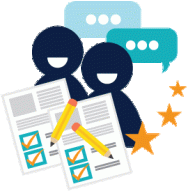
Two videos that I watched from Success at the Core were very well aligned with Wiliam’s suggestions for peer/self-assessment. In the first video (Channel, 2014) https://www.teachingchannel.org/videos/peer-conferencing, the teacher had the students peer edit each other’s writing. The steps that he had students go through were…
This teacher had students use a graphic organizer to guide them through the peer editing process. He also made sure that students used specific examples from the text to point out what they liked, areas for elaboration, and pose questions about the text. Each student also made an action plan on what they were planning to do next after the editing process. Peer conferences are an excellent way to conduct formative assessments.
The second video was based on guided groups for formative assessments (Channel, 2014) https://www.teachingchannel.org/videos/guided-groups-formative-assessment. After a lesson, this teacher had students annotate their own papers with the following letters…
Right away, the teacher was able to see who still needed help or didn’t understand the assignment or concepts. She was able to help those students while the ones who were ready to move on, went back to their desks to work. As students who needed the extra help started to understand, she had them change their letter to a “C” and leave the group to work individually.
Wiliam (2011) advocates for both peer and individual assessments, saying that often-times students learn more working with a peer than with the teacher. Wiliam (2011) says that “The purpose of peer assessment should be simply, and purely, to help the individual being assessed improve his work.” That’s what the students in the first video were doing. They were systematically working through a graphic organizer to help their peers to fine-tune their writing. Wiliam (2011) also states that “…activating students as owners of their own learning can produce extraordinary improvements in their achievement.” In both videos, the students were definitely actively participating in their own learning and the learning of their peers. Both of these videos were for writing lessons. I am wondering how they would have worked for other subject areas.
Integrating Assessment into Instruction:
As a teacher leader, I plan to use my new knowledge about the importance of formative assessments to help support my colleagues in building awareness, skills and capabilities in this area. For one, my grade level Data Team would be a perfect place to start. As I work with my team on effective strategies for helping our students to reach their learning targets, I can introduce some of the research and techniques that I have found on formative assessments. We can add these to our strategy list and use them with our classes and groups. In addition, I can talk with my principal about the possibility of presenting some formative assessment strategies at a staff meeting and letting teachers know that I can be a resource for them. I can also add a page to our school Haiku site with information and strategies for formative assessments. This way, teachers can access the site and get information anytime they need to.
Learning Progression:
“A learning progression is a carefully sequenced set of building blocks that students must master en route to mastering a more distant curricular aim. These building blocks consist of sub-skills and bodies of enabling knowledge. More and more education authorities are now identifying learning progressions as a potent way to help teachers plan and monitor their instruction and, as a result, enhance their students’ learning” (Popham, 2016). Throughout this course, I worked on putting together a learning progression for a 4th grade reading intervention group. The orange circle is the main objective. The blue boxes are the building block skills. The green boxes include the types of formative assessments included in the progression. The tan colored boxes include the specific questions/hinge questions for the formative assessments.

Assessment into Action Project – Feedback:
Rationale Statement
Providing high quality, effective feedback is extremely important for improving student learning. According to Hattie, the average effect size of classroom feedback is .79, which is nearly double the .4 average benchmark. Therefore, Hattie places “feedback in the top 10 influences on achievement” (Sutton, Hornsey, & Douglas, 2012). I chose this topic because it was an area in which I wanted to learn more about and improve in my teaching. While reading Embedded Formative Assessment, I was shocked when Wiliam shared the table on page 115 about the possible responses to feedback (2011). I was amazed that feedback can go so terribly wrong in so many instances. Out of the eight possible response scenarios, only two of them were positive (Wiliam, 2011). Giving quality feedback is essential in helping to move students forward in their learning. In order to have higher student achievement, I wanted to research best practices in giving feedback, both in the “what” and in the “how”. I have studied growth mindset and I have seen how gearing feedback to this type of mindset as opposed to a fixed mindset can have great benefits.
Research Questions
Through my research on feedback, I hoped to answer the following key questions. How does feedback support learning? What makes feedback effective? What are some useful strategies to convey this feedback to my students to move learning forward? Additional questions that I was hoping to answer also included the following. How do I give focused, specific feedback that directly relates to the learning target? How can I best build a growth mindset among my students? How do I gear feedback to build on that growth mindset? How much is too much feedback? How can I best structure peer and personal feedback? How can I best have my students follow through on the feedback that they have received or have given themselves? How do I structure time for feedback and student revisions within a curricular unit/lesson?
Action Plan

Within my Safety Net reading and math classes this coming year, I plan to implement many of the new things that I have learned about giving effective feedback to my students in order to help them to move their learning forward. As Hattie states, “When students understand their goals and what success at those goals look like, then the feedback is more powerful (Sutton, Hornsey, & Douglas, 2012).” I plan to help my students to understand and interact with the learning targets for each lesson. Sharing success criteria, rubrics, and exemplars will help my students to see where they are headed and how to get there. Through the use of continuous formative assessments, my students will know where they are on the path to their goals and I will be able to adjust my teaching to meet the needs of my students. My students will be tracking their own learning progress and making individual goals that will scaffold them toward achieving the learning targets. I will keep parents in the loop as well, by giving them information about our learning targets, resources that they can use to support their child, and feedback about where their child is and what the next steps are in helping them to reach their goals. Through the use of teacher, peer, and student feedback, students will be receiving guidance to help them along on their learning journey and help them to become more self-reflective about their own learning and progress. I plan to give my students time in class to discuss their work with me, go over the comments on assignments (either on their own or with a peer) and then have time to process that information, create an action plan for moving forward, and make the necessary revisions or changes. “Don’t provide students with feedback unless you allow time, in class, to work on using the feedback to improve their work (Wiliam, 2011).” I plan to give more comments on assignments or tasks without assigning grades at the same time. “As soon as students get a grade, the learning stops. If grades stop learning, students should be given them as infrequently as possible (Wiliam, 2011).” I really liked the example that Wiliam gives on page 130. A teacher wrote comments on strips of paper instead of on students’ assignments. Then she gave small groups of students their papers back and the separate comment strips. The groups had to determine which comments went with which assignments. This seems like a very powerful way to help students to really analyze and internalize the feedback not only for their own work, but for the work of their peers, in a non-threatening way (Wiliam, 2011).
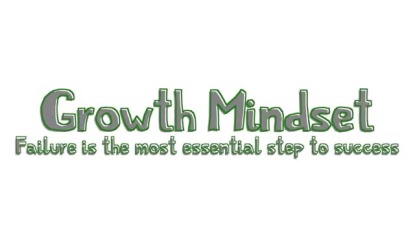
“Learning in classrooms will be considerably enhanced if students embrace this idea of ‘It’s up to me, and I can do something about it.’ (Wiliam, 2011).” I plan to build a positive learning environment by teaching my students about the brain and having a growth vs. fixed mindset. I plan to praise students for their effort and not their intelligence. I also plan to praise students for their hard work and not how fast they get through an assignment. I will continually reiterate the fact that challenges and mistakes are opportunities to grow our brains. I want my students to understand that intelligence is not fixed at birth and that through developing a growth mindset, they can take on challenges and grow their ‘smarts’ (Dweck, 2007). I will use a student survey to help me determine where my students fall on the mindset continuum. After teaching about the brain and growth mindset, I plan to reassess using the same measure. In order for my students to view challenges and mistakes in a positive light, I plan to share stories of famous people and the failures that they went through on their paths to success. I also plan to teach them that the word FAIL has a new meaning…F-irst, A-ttempt, I-n, L-earning. I want them to see failures and challenges as part of the learning process and necessary in order to grow their brains. I also plan to encourage my students to understand the power of the word ‘yet’. Whenever they say that they can’t do something, we will add the word ‘yet’ to the end of that statement, so that they can see that learning is a work in progress and not an end product (Dweck, 2010). I plan to use children’s literature, videos, discussions, partner sharing, drawing, physical demonstrations and diagrams, etc. to help my students internalize information about how their brains function and about the benefits of having a growth mindset. “Therefore, what we need to do is ensure that the feedback we give students supports a view of ability as incremental rather than fixed: by working, you’re getting smarter (Wiliam, 2011).”
One question that I had about feedback was – How much feedback is too much? According to Susan Brookhart (2008), the amount of feedback given to a student is very individualized. Instead of trying to “fix” every error a student makes, I plan to take that student’s background knowledge, motivation, and personality into account when determining the “right” amount of feedback to give them. Brookhart (2008) suggests that we give students enough feedback so that they know what to do next, but not so much that the work has already been done for them. She also suggests giving feedback on two to three main points, gearing feedback toward the learning targets, and sharing at least as many strengths as weaknesses. I plan to use the “Two Stars and a Wish” technique, which was referenced in many of the research sources that I found, with my students this year. This strategy should work well for peer and self-reflection. In Wiliams (2011), he gives an additional variation to this technique. He suggests having students put the comments on sticky notes and after students have responded to the comments, the teacher collects them and goes over them with the class, analyzing how helpful the comments were. If I use this strategy, I will be helping my students to understand how to be more reflective and how to write comments that will help to move learning forward. I also like the feedback frame, “I noticed…, I wondered…” shared in the following video on the Teaching Channel. https://www.teachingchannel.org/videos/student-to-student-feedback-nea. Using a feedback frame such as this one, would help to narrow the focus so as to not overwhelm the student with too much feedback.
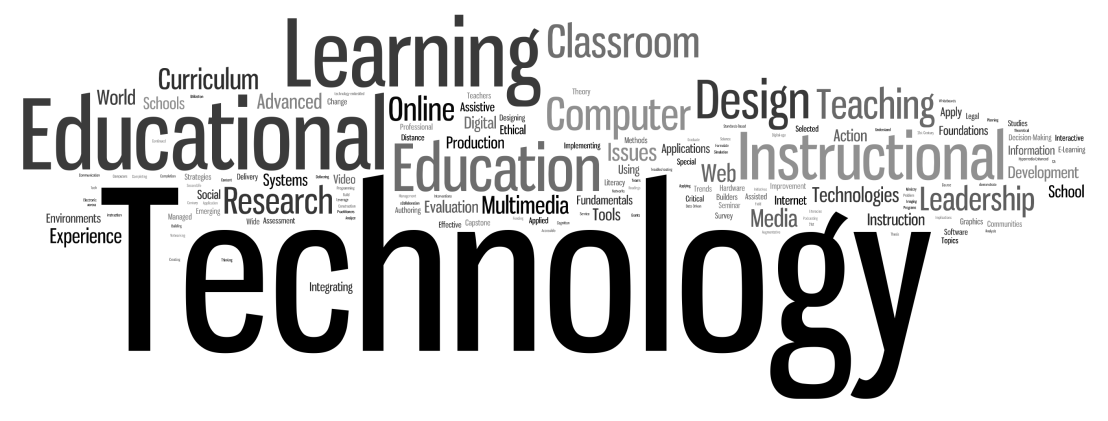
Through my research, I found some interesting ways to use technology to enhance the giving of feedback. Many of these, didn’t seem to fit my teaching situation, but I plan to try to incorporate some form of technology into my feedback repertoire. A couple of tools that I found to help with giving both written and oral feedback are GoogleDocs (voice and written comment features) and Evernote (audio notes). Using podcasts is another way to use technology tools to provide feedback. Here is a link to a video on how to give feedback using podcasts https://www.teachingchannel.org/videos/student-feedback-through-technology. Jing is another great tech tool to use to create video feedback https://www.techsmith.com/jing.html?gclid=COX8taCDqc4CFZBhfgodt8gN5w. It also introduces resources on giving effective feedback. Kahoot is a site to create online quizzes that students and teachers can use to get immediate feedback on student responses. Here’s how to create a Kahoot online quiz … http://mrseteachesmath.blogspot.com/search?updated-max=2014-12-13T05:00:00-06:00&max-results=5. Another interesting idea that I might like to try this year is having my students create eportfolios to track their progress throughout the year. Here are a couple of sites related to eportfolios… https://www.iste.org/explore/articleDetail?articleid=31&category=Toolbox&article=Which-e-portfolio-tool-is-best-for-you and https://www.digication.com/.
As a teacher leader, I plan to use my new knowledge about effective feedback to help support my colleagues in building awareness, skills and capabilities in this area. For one, I think my grade level Data Team would be a perfect place to start. As I work with my team on effective strategies for helping our students to reach our learning targets, I can introduce some of the research and techniques that I have found on feedback. We can add these to our strategy list and use them with our classes and groups. In addition, I can talk with my principal about the possibility of presenting some feedback strategies to our staff at a meeting or on a LEAP day and letting them know that I can be a resource for them to troubleshoot their feedback practices or to offer new research based ideas for them to try out. I can also add a page to our school Haiku site with information and strategies for giving effective feedback. This way, teachers can access the site and get information anytime they need to.
Reflection

As I reflect on the research that I have conducted on effective feedback, I realize how critical it is to give timely, specific feedback that is related to the learning targets. This feedback should “provide a recipe for future action (Wiliam, 2011).” I need to give my students time in class to reflect on that feedback and use it to move their learning forward. I need to give just the right amount of feedback so as not to overwhelm my students. I need to focus on a few areas within my feedback and not try to fix everything. Using feedback frames such as, Two Stars and a Wish, helps to focus the feedback. I need to look at how I give my feedback through the eyes of my students. In order for them to reflect, internalize, and use this feedback, I need to provide opportunities for them to reflect on their peers’ work as well as on their own. In order for them to become more self-regulated in their learning, we need to practice giving feedback often and look at how helpful that feedback can be. A growth mindset should be taught and encouraged to create a positive classroom learning climate. In order for students to be able to accept feedback, they should see errors as important to the learning process. It’s also important to use many formative assessments without grades attached. Giving written, oral, or technology based feedback without grades is more useful in guiding students to make needed adjustments to their work. Feedback can so often go wrong. It’s important to be intentional and use research based practices and strategies when giving feedback to our students in order to move their learning forward and to build on their motivation to continue learning.
References:
Popham, J. W. (2016). Educational leadership: The prepared graduate: The lowdown on learning progressions. Retrieved August 18, 2016, from http://www.ascd.org/publications/educational-leadership/apr07/vol64/num07/The-Lowdown-on-Learning-Progressions.aspx
Pawlina, S., & Stanford, C. (2011). Preschoolers grow their brains: shifting mindsets for greater resiliency and better problem solving. YC Young Children, 66(5), 30-35.
Dweck, C. S. (2007). Boosting achievement with messages that motivate. Education Canada, 47(2), 6-10.
Dweck, C. S. (2010). Even geniuses work hard. Educational Leadership, 68(1), 16-20.
Konold, K. E., Miller, S. P., & Konold, K. B. (2004). Using teacher feedback to enhance student learning. Teaching Exceptional Children, 36(6), 64-69.
Nicol, D. J., & Macfarlane-Dick, D. (2006). Formative assessment and self‐regulated learning: a model and seven principles of good feedback practice. Studies In Higher Education, 31(2), 199-218.
Brookhart, S. M. (2008). How to give effective feedback to your students. Alexandria, VA: Association for Supervision and Curriculum Development.
Wiliam, D. (2011). Embedded formative assessment. Australia: Hawker Brownlow Education Pty.
Sutton, R. M., Hornsey, M. J., & Douglas, K. M. (Eds.). (2012). Feedback: The communication of praise, criticism, and advice. New York: Peter Lang Publishing.
Shute, V.J.(2008). Focus on formative feedback, Review of Educational Research, 78(1), 153- 189.
Channel, T. (2015, October 28). I noticed & I wondered Retrieved from https://www.teachingchannel.org/videos/student-to-student-feedback-nea
- (1995). Take screenshots and screencasts for free, with Jing. Retrieved August 4, 2016 from https://www.techsmith.com/jing.html?gclid=COX8taCDqc4CFZBhfgodt8gN5w
How to create a Kahoot! (2014, December 10). Retrieved August 4, 2016, from education, http://mrseteachesmath.blogspot.com/search?updated-max=2014-12-13T05:00:00- 06:00&max-results=5
Burke, L., & Servilio, K. (2014, October 6). Which e-portfolio tool is best for you? Retrieved August 4, 2016, from https://www.iste.org/explore/articleDetail?articleid=31&category=Toolbox&article=Which-e-portfolio-tool-is-best-for-you
Digication. Digication. Retrieved August 4, 2016, from https://www.digication.com/

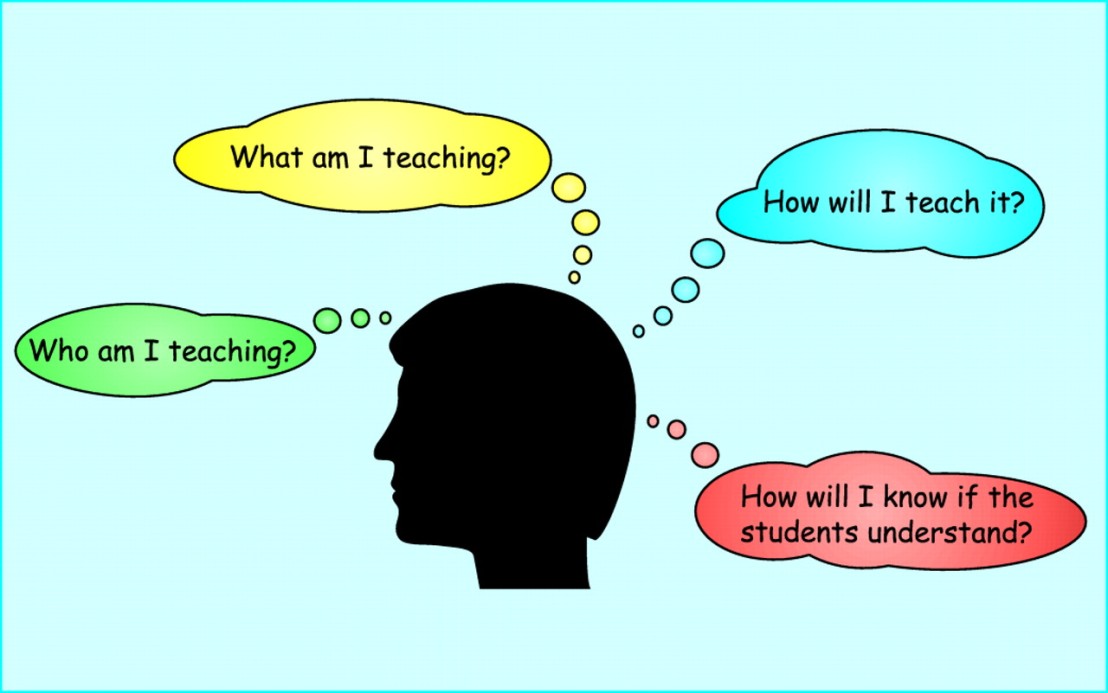


 Another article that I read during this course was Enhancing Core Reading Programs with Culturally Responsive Practices, by Katie Toppel (2015). As I was using the district adopted reading intervention curriculum for my unit planning, this article was especially interesting to me. The author describes being a culturally responsive teacher as “demonstrating care for students, incorporating opportunities for student collaboration, and strategically using instructional techniques to elicit better engagement” (Toppel, 2015). She suggests getting to know students and their families starting from the beginning of the year. One idea that she uses is a personal alphabet. She sends a template home with each student at the beginning of the year and has the family fill out a word or phrase for each letter of the alphabet to help to describe their child’s family, culture, interests, strengths, favorite things, etc. I think this would be a great way to get to know my students better. We could share student lists in class and then I could refer back to them throughout the year to help me differentiate my instruction and make it more culturally and personally relevant for my students. “Partner sharing, often referred to as ‘turn and talk’ is a great way to allow for variations in how students from different cultural groups prefer to communicate” (Toppel, 2015). I am incorporating partner work and turn and talk throughout my unit to help students to learn from each other, have a chance to share their own ideas, and to have active participation among all my students. “Some students, particularly students who are learning English, will benefit from language supports such as sentence starters or sentence frames” (Toppel, 2015). In the differentiated section of my unit plan, I scaffolded my lessons by using sentence stems for students who are struggling. One additional way that I will be ‘inviting my students to learn” is through the engaging scenario, real world project toward the end of my unit. Students will be working with a partner to solve a real world problem and can use their creativity in a variety of ways.
Another article that I read during this course was Enhancing Core Reading Programs with Culturally Responsive Practices, by Katie Toppel (2015). As I was using the district adopted reading intervention curriculum for my unit planning, this article was especially interesting to me. The author describes being a culturally responsive teacher as “demonstrating care for students, incorporating opportunities for student collaboration, and strategically using instructional techniques to elicit better engagement” (Toppel, 2015). She suggests getting to know students and their families starting from the beginning of the year. One idea that she uses is a personal alphabet. She sends a template home with each student at the beginning of the year and has the family fill out a word or phrase for each letter of the alphabet to help to describe their child’s family, culture, interests, strengths, favorite things, etc. I think this would be a great way to get to know my students better. We could share student lists in class and then I could refer back to them throughout the year to help me differentiate my instruction and make it more culturally and personally relevant for my students. “Partner sharing, often referred to as ‘turn and talk’ is a great way to allow for variations in how students from different cultural groups prefer to communicate” (Toppel, 2015). I am incorporating partner work and turn and talk throughout my unit to help students to learn from each other, have a chance to share their own ideas, and to have active participation among all my students. “Some students, particularly students who are learning English, will benefit from language supports such as sentence starters or sentence frames” (Toppel, 2015). In the differentiated section of my unit plan, I scaffolded my lessons by using sentence stems for students who are struggling. One additional way that I will be ‘inviting my students to learn” is through the engaging scenario, real world project toward the end of my unit. Students will be working with a partner to solve a real world problem and can use their creativity in a variety of ways.
